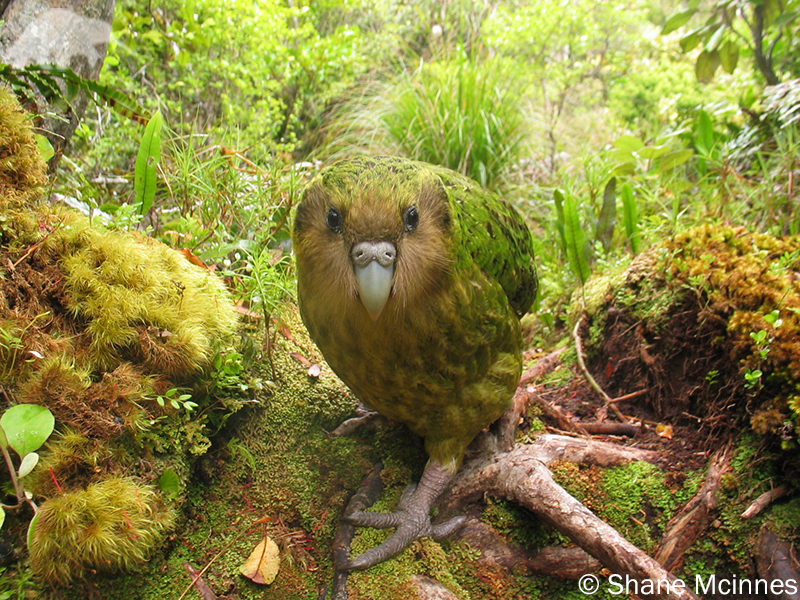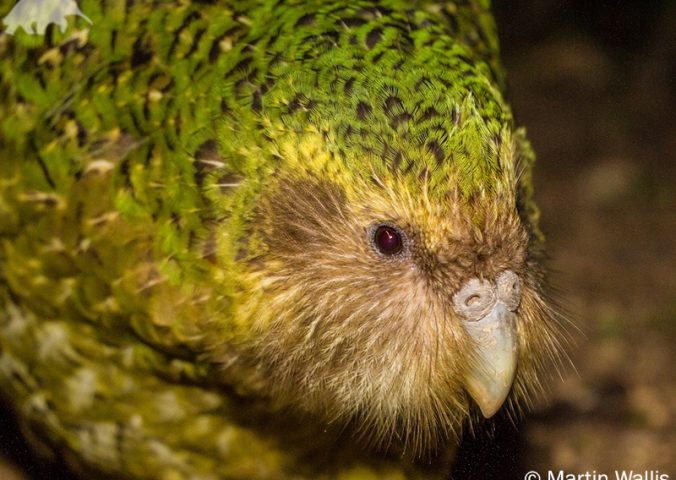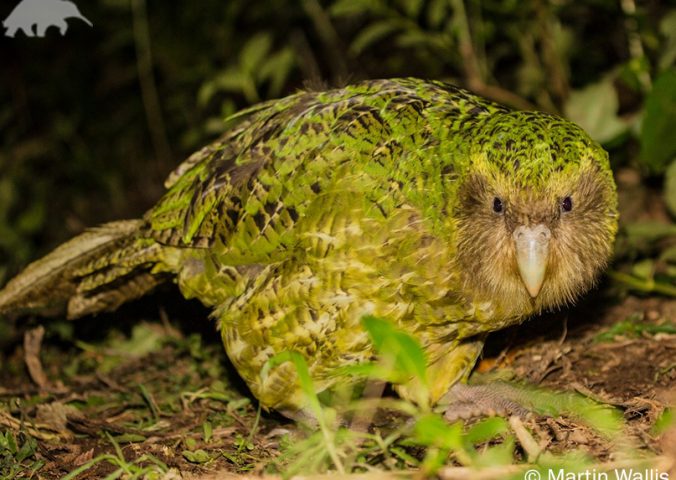About
The nocturnal Kakapo or ‘Owl Parrot’ (so called because of its facial disc of owl-like whiskers) is a large, stocky, New Zealand endemic bird.
The Kakapo is the heaviest of all the parrots, usually gaining between 60-100% in body weight in preparation for the breeding season. The Maori name ‘Kakapo’ means ‘night parrot’ reflecting the bird’s nocturnal behaviour. Unlike typical parrots, which are gaudy, sociable and strong-fliers, the Kakapo is solitary and flightless, running through the forest on its strong, muscular legs, having evolved in the absence of mammalian predators. They are the only members of its’ own subfamily, Strigopinae. The Kakapo is surprisingly adept at climbing, hauling its great weight up trees using a powerful beak, and by flapping its short wings can jump to the ground from as high as 15 meters without injury. They can live as long as 90 years (with an average lifespan of 60 years), making them the world’s longest living bird as well as exhibiting the lowest energy expenditure of any bird.
The species was previously widespread and common throughout the country. Unfortunately the introduction of mammalian predators caused a catastrophic decline in numbers. It is now extinct throughout its natural range, and survives only on three small, intensively managed islands following a series of successful translocations. Dedicated conservation efforts have seen the population increase slowly to 125 individuals.
- Order: Psittaciformes
- Family: Strigopidae
- Population: 126
- Trend: increasing
- Size: 58-64cm
- Weight: 2-4kg
EDGE Score
Distribution
Endemic to New Zealand, though extinct throughout its natural range which historically covered areas throughout the North, South and Stewart Islands. Individuals from Stewart Island were translocated to three off-shore islands: Codfish Island/Whenua Hou, Anchor Island, and Little Barrier Island/Hauturu-o-Toi, providing a species range of around 6,000 hectares.
Habitat and Ecology
The Kakapo can be found in a wide range of habitats of varying altitudes and climates, including forest, scrub, herb fields and tussock grassland. The species has also adapted to unfamiliar habitats, including pastureland.
These herbivorous birds have a varied diet as they forage in the tree tops for fruit and on the ground for the leaves, roots, bark and seeds from a number of native plant species.
The kakapo is the only parrot known to form “leks”, breeding territories where males attract females for mating, making loud ‘booming’ calls at night, audible for up to 5 km. Breeding only occurs in years where there is a heavy supply of fruit, and thus clutches are only laid every two to five years, making for a very slow breeding cycle.


